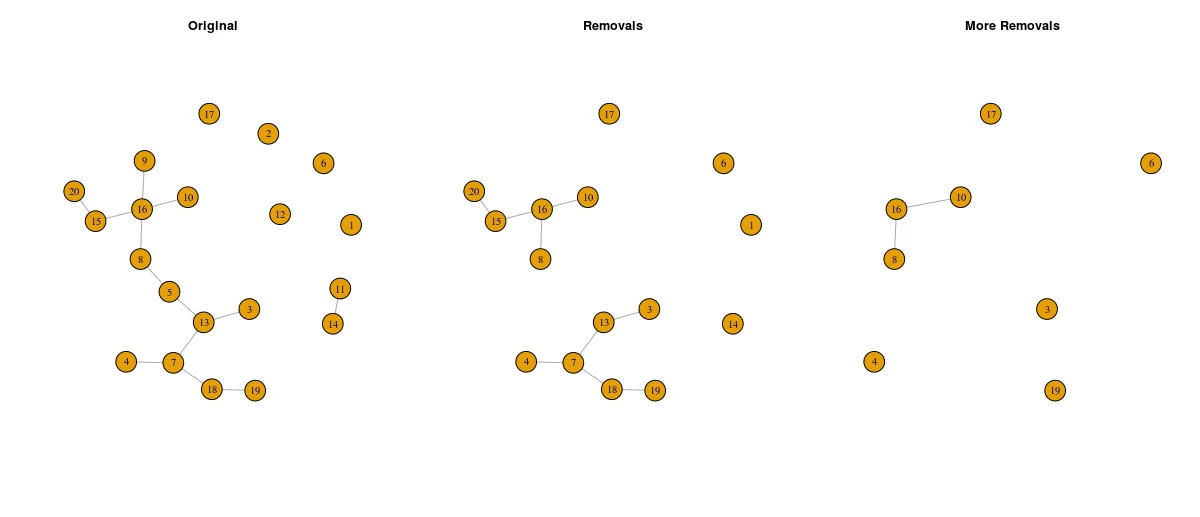我希望创建一个包含4个步骤的图形可视化,即不同时刻的不同点。我的顶点(节点)的位置应该始终保持相同(使用完整图的位置)。我只想从R igraph图中删除一些顶点。问题似乎在于顶点名称会发生变化。
# Erdos
par(mfrow=c(1,3))
g <- erdos.renyi.game(20, 1/20)
locs <- layout.fruchterman.reingold(g)
V(g)$name <- V(g)
# In the original file, vector names look like this (not "1,2,3,4...):
V(g)$name <- as.vector(c(8,9,3,5,13,6,7,1,2,18,11,12,16,14,15,4,17,10,20,19))
V(g)$name
plot(g,
layout=locs,
main="Original")
# Remove a few vertices
removals1 <- c("12","2","9","11","4")
g2 <- delete.vertices(g,removals1)
plot(g2,
layout=locs[-as.numeric(removals1),],
main="Removals")
# Remove some more
removals2 <- c("15","14","7","8","5","19","10")
g3 <- delete.vertices(g2,removals2)
plot(g3,
layout=locs[-as.numeric(c(removals1,removals2)),],
main="More Removals")
我很希望在这里找到一个解决方案。也许,还有更加优雅的解决方案,类似于上面的那个。谢谢!
